Physical Address
304 North Cardinal St.
Dorchester Center, MA 02124
Physical Address
304 North Cardinal St.
Dorchester Center, MA 02124

Custom tent manufacturing lets you design every detail from size to features, eliminating those frustrating compromises you've made before.
You’ve probably compromised on tent features more times than you’d like to admit. That three-person tent that barely fits two people, or the “waterproof” shelter that leaked during your last camping trip. Off-the-shelf tents rarely match your specific needs, whether it’s extra headroom, better ventilation, or storage pockets in the right places. But what if you didn’t have to settle? Custom tent manufacturing has become surprisingly accessible, and the process might be simpler than you think.
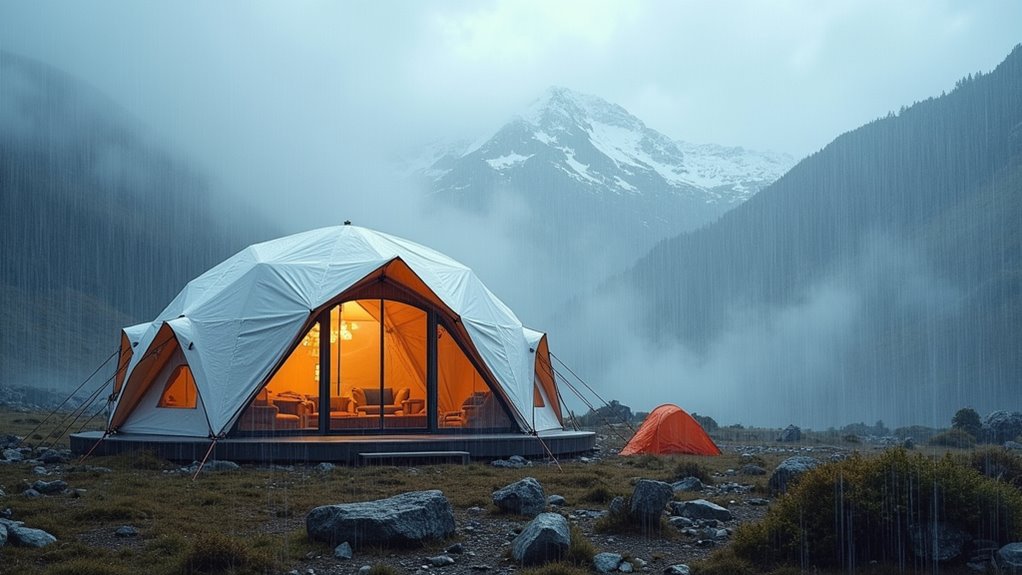
When you’re shopping for a tent, you’ll quickly discover that most standard options force you into uncomfortable compromises. You’ll find yourself settling for inadequate ventilation, cramped sleeping quarters, or flimsy materials that won’t withstand harsh weather.
Standard tents often prioritize mass appeal over individual needs. That three-person tent? It barely fits two adults comfortably. The “waterproof” rating might fail during your first real downpour. You’re stuck with generic color schemes that don’t match your gear or preferences.
Most frustrating is the one-size-fits-all approach. Your camping style, whether you’re backpacking solo or car camping with family, demands specific features. Yet manufacturers ignore these distinctions, leaving you with expensive gear that doesn’t truly serve your purpose.
Without proper research into essential factors like tent capacity, seasonal ratings, and setup complexity, you’ll likely end up with a tent that disappoints when you need it most.
Fortunately, a growing number of manufacturers now recognize that serious campers deserve better than cookie-cutter solutions. You’ll find companies offering customizable features like adjustable vestibule sizes, specialized pole configurations, and fabric choices tailored to your climate needs.
This shift happened because campers started demanding gear that matches their specific adventures. Whether you’re a solo backpacker needing ultralight materials or a family requiring extra headroom, custom manufacturers can deliver exactly what you need.
The best part? Custom doesn’t always mean expensive. Many companies offer modular systems where you’ll pay only for features you’ll actually use. You can start with a basic setup and add components later as your needs evolve.
This approach saves money while ensuring your tent grows with your camping experience. When designing a custom tent, you have complete control over every aspect to create a shelter that perfectly matches your outdoor lifestyle.
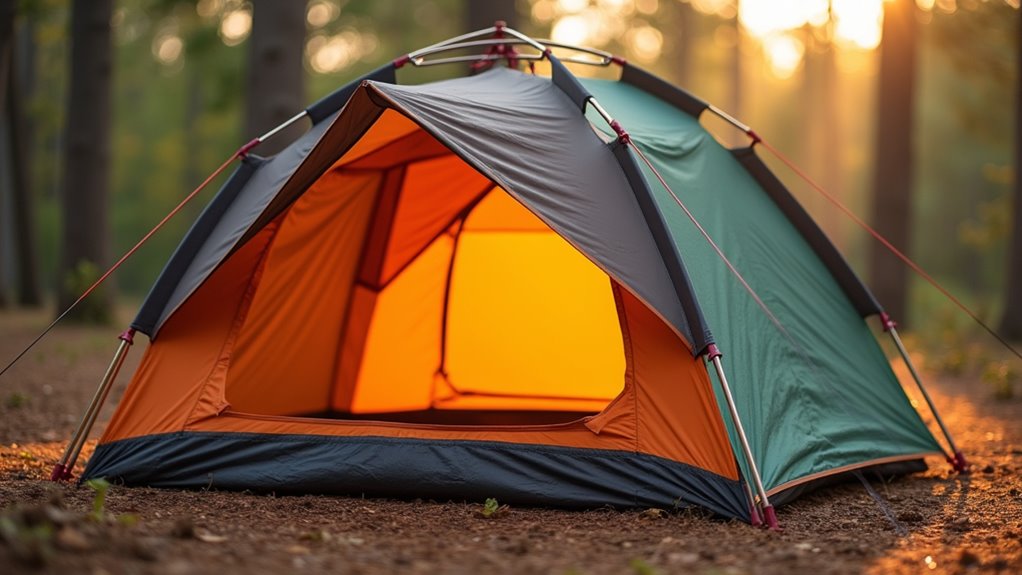
Now that you know custom tent options exist, let’s look at what you can actually change to make your shelter work better.
You can modify the tent’s footprint to fit tight camping spots or create more interior space.
Vestibule size adjustments give you extra gear storage without paying for unused features.
Door placement matters—you’ll want entrances that work with your campsite layout and weather patterns.
Interior height customization prevents that constant crouch-walk.
Ventilation placement keeps condensation under control while maintaining warmth.
You can specify pocket locations for your specific gear organization needs.
Color choices aren’t just aesthetic—lighter colors stay cooler, darker ones hide dirt better.
For the ultimate camping experience, consider pairing your custom tent with a truck combo setup that maximizes both mobility and comfort.
Most manufacturers offer these modifications at reasonable upcharges, making personalization accessible without breaking your camping budget.
After you’ve settled on your tent’s design features, material selection becomes your next critical decision. Your climate determines everything from fabric weight to waterproof ratings.
For hot, dry conditions, you’ll want lightweight ripstop nylon with excellent ventilation. It’s affordable and breathes well.
Cold weather camping demands heavier denier fabrics that won’t crack in freezing temperatures – polyester works better than nylon here.
Wet climates require higher waterproof ratings. Look for 3,000mm minimum, though 1,500mm suffices for occasional light rain. Don’t overpay for 10,000mm ratings unless you’re facing serious storms.
Consider hybrid approaches too. A lighter summer fly with a heavier winter option gives you year-round versatility without buying separate tents.
When planning for winter camping, ensure your tent materials can handle the additional challenges of winter campsite selection where wind exposure and snow load become critical factors.
Match your materials to your actual conditions, not worst-case scenarios.
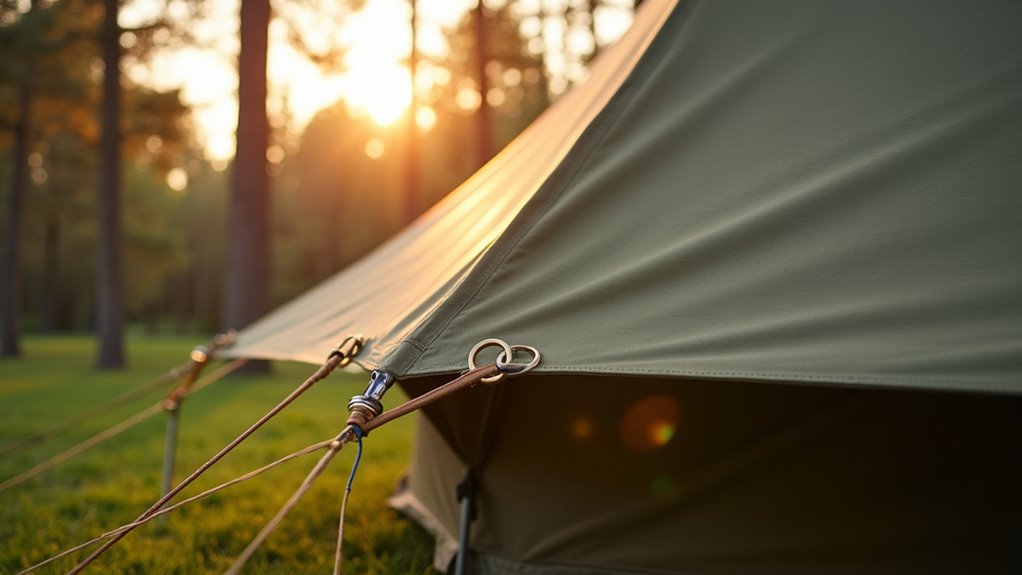
While you could tackle tent construction yourself, partnering with a professional tent maker saves time and delivers superior results. Research local manufacturers who specialize in custom outdoor gear. Check their portfolios, read reviews, and ask for references from previous clients.
When discussing your project, be specific about your needs: camping style, group size, weather conditions, and budget constraints. Professional makers can suggest cost-effective alternatives without compromising quality. They’ll help you avoid expensive mistakes and recommend materials that balance durability with affordability.
Request detailed quotes from multiple makers to compare pricing and timelines. Don’t automatically choose the cheapest option—consider their expertise, warranty coverage, and reputation. A well-made custom tent costs more upfront but saves money long-term through better performance and longevity.
Plus, discuss hygiene considerations with your tent maker, as many campers prioritize having designated spaces for camping showers and cleanliness routines during extended outdoor trips.
Since custom tent costs vary dramatically based on size, materials, and complexity, establishing a realistic budget becomes your foundation for smart decision-making. You’ll typically spend anywhere from $500 for basic custom modifications to $5,000+ for fully engineered specialty tents.
Start by prioritizing your must-have features versus nice-to-haves. Premium materials like ripstop nylon or specialized waterproofing add substantial costs, while standard fabrics keep expenses manageable.
Complex designs requiring multiple prototypes will increase your final bill.
Request detailed quotes from multiple tent makers, including material breakdowns and labor costs. Don’t forget to factor in shipping expenses and potential revision fees.
Consider phasing your project—you can always upgrade components later rather than overextending your budget initially. If you’re planning to use your tent for activities like winter fishing in Florida, factor in specific environmental requirements that may affect material choices and overall costs.
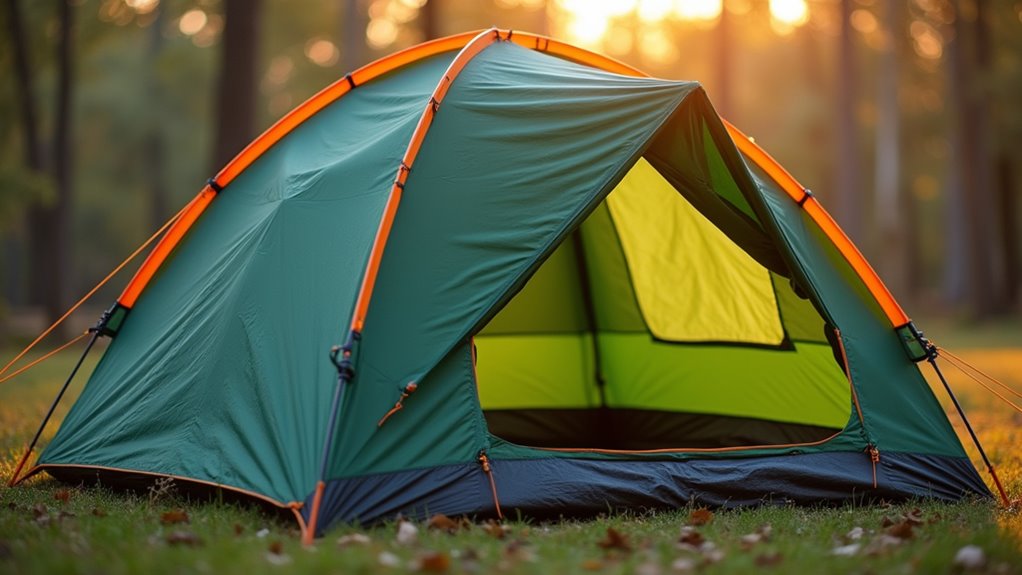
When you’re ready to transform a basic tent into your perfect shelter, certain modifications deliver the biggest impact for your investment. Start with ventilation upgrades—adding mesh windows or roof vents prevents condensation buildup that’ll ruin your gear and comfort.
Smart tent modifications maximize comfort and performance without the expense of buying premium gear from scratch.
Reinforced guy-out points dramatically improve stability in windy conditions without breaking your budget.
Consider waterproof zippers if you’re camping in wet climates. They’re worth every penny when storms hit.
Floor reinforcement patches protect high-wear areas where you’ll enter and sleep, extending your tent’s lifespan remarkably.
Internal organization systems like gear lofts and pocket additions keep essentials accessible while maximizing floor space.
LED light strips with battery packs transform nighttime functionality.
Don’t forget to designate space for essential gear like a camping water filter, which ensures safe drinking water throughout your outdoor adventures.
These targeted improvements create substantial comfort gains without requiring expensive complete tent replacements.
After investing time and money into customizing your tent, proper maintenance becomes your insurance policy against costly replacements. Your custom features deserve the same attention you gave during selection.
Essential maintenance steps protect your investment:
You’ll extend your tent’s lifespan notably with consistent care. Address small issues immediately rather than waiting for major failures. Your wallet will thank you when that custom shelter serves you for years instead of seasons.
Understanding the proper washing techniques will help preserve your tent’s materials and waterproof coatings while removing harmful contaminants that could compromise its performance.
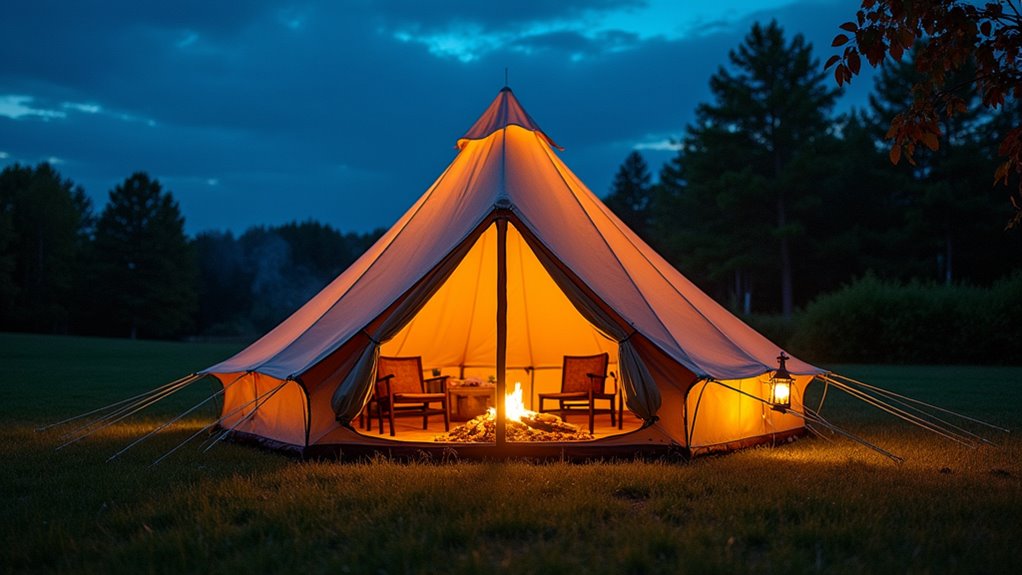
These owners consistently mention getting exactly what they wanted while often spending less than high-end alternatives. When planning your next outdoor adventure, having the right camping supplies can make the difference between a memorable experience and a challenging one.
You’ll join the 23% of serious campers who’ve discovered that custom tents last 40% longer than mass-produced alternatives. While you might spend 30-50% more upfront, you’re actually saving money over time through superior durability and fewer replacements. Your personalized shelter won’t just meet your needs—it’ll exceed them for years to come. Stop settling for “good enough” when you can have exactly what you want at a surprisingly reasonable long-term cost.